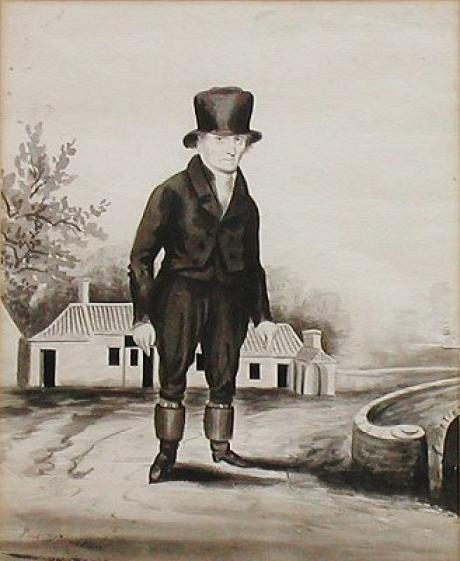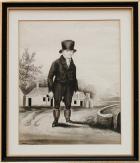A Priest that performed weddings in Gretna Green, Scotland, between the dates 1783-1895. He performed weddings in 'Springfield'. Gretna, famous for its runaway marriages, is only a few miles from Longtown. The Gretna marriage business dated from 1754, when English law prohibited irregular marriages, while they were still legal in Scotland. Until 1822, the road to Gretna or Springfield went through Longtown, which saw many runaway couples and their pursuers travelling through the town. Lang, or Laing, was born in 1755 and as a young man became a peddler walking from village to village selling small items of drapery and haberdashery. While he was working in Lancashire he was caught by the "Legalized Kidnappers" – the press gang and was forced to serve in the British Navy, where he spent several years. His ship was captured by John Paul Jones, considered by the English as a pirate, but by the Americans as the famous father of the American Navy. After a time in America, Lang managed to be reshipped and returned to England. Lang was the nephew of Joseph Paisley and he decided to try his luck at competing with his uncle. Lang entered the 'marriage trade' in 1792. He was then aged about thirty-eight: "a fine looking man with a large full face, amiable expression and dark intelligent eyes". He built up a lucrative business for himself and was ranked equal with Paisley, "both in prosperity and in his addiction to the bottle". He dressed in a clerical style in accordance with his self-important air, which earned him the nickname "Bishop Lang". He married many distinguished couples and was involved in the marriage of the notorious Wakefield, abductor of Ellen Turner. Lang was called to give evidence at Wakefield's trial at Lancaster in 1827. Apparently, the journey was too severe for the old man and he died the same year, at the age of seventy-two. Gretna Green's "anvil priests" were a colorful set of characters who setup shop in hostelries and Coaching inns in the village, and made their living from the marriage trade. Many had other occupations - blacksmith, fisherman, weaver, saddler - none of them had any 'qualifications' to perform marriages and used Scotland's marriage laws as a way of earning extra money. Some of the more unsavoury anvil priests moved to the village from London after Lord Hardwicke's act put them out of a job by making the irregular marriage trade illegal in England. To perform a marriage, the anvil priest simply asked the couple to plight their troth in front of two witnesses, and, quick as the bang of a hammer on an anvil, their word was law. If a couple had come unaccompanied, the anvil priest would often knock on a neighbour's door to ask them to come and serve as a witness. If word came that the angry father was fast approaching Gretna Green and there was a risk of the marriage being interrupted, the anvil priest - so the story goes - told the lovers to nip into bed. When the pursuer arrived, he was shown to the bedroom. On seeing the couple in the bed, he assumed he was too late, as the marriage was well on the way to being consummated. In popular folklore, the village blacksmith and the blacksmith's anvil have become the enduring symbols of Gretna Green weddings. As a "forger", the blacksmith marries hot metal to metal over the anvil, in the same way the anvil priests forged a union between couples who had eloped in love. In those days, the village blacksmith was the lifeblood of any village, always at work making horseshoes, fixing carriages and farm equipment in his Blacksmith's workshop. In Gretna Green, the Blacksmith's Shop was at the heart of the village, at the junction of five old coaching roads, known as 'Headless Cross'. Over the years, the Blacksmith's Shop became Gretna Green's best-known marriage venue, and the word Blacksmith became synonymous with Gretna Green weddings.
English
School 19th
Century
Portrait of David Lang the Gretna Priest 1792-1827
David Lang the Gretna Priest 1792-1827
pencil and brown wash
15 x 10 cm. (6 x 4 in.)
£700
Notes


